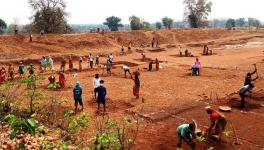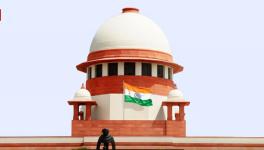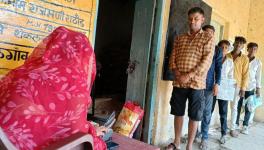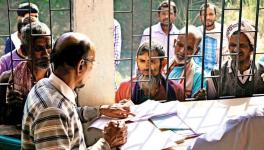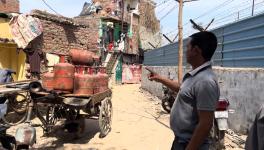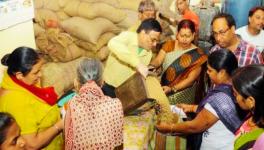‘No Evidence of Aadhaar Improving Welfare Delivery’
Aadhaar was the brainchild of tech billionaire Nandan Nilekani under the UPA, but after the BJP-led NDA came to power, it imposed and increased Aadhaar enrolment at an unprecedented pace. In 2016, the government mandated its use in welfare programme delivery. Like the UPA-II, the NDA-II believes that Aadhaar can transform welfare delivery, despite evidence to the contrary.
According to a recent report in Livemint, (using 2011 Census projections) there are now 1.24 billion Aadhaar numbers in India, covering approximately 98 per cent of the country’s population. The expansion in reach has enabled Aadhaar to become an integral component of several flagship government programmes like the Mahatma Gandhi National Rural Employment Guarantee Scheme (MGNREGS) and the public distribution system (PDS).
These are two of India’s largest welfare programmes where nearly 90 per cent of beneficiaries are linked to Aadhaar (or Aadhaar-seeded).
Aadhaar-seeding is just one component of the NDA-II’s broader vision for welfare programme delivery. Alongside mass Aadhaar enrolment, the NDA-II has invested heavily in bank accounts through the Jan Dhan Yojana. These accounts, which are Aadhaar-seeded, are now being used for programme delivery via Direct Benefit Transfer (DBT) and are part of the much-vaunted JAM (Jan Dhan-Aadhaar-Mobile) trinity. The 2014-15 Economic Survey heralded JAM as a potential game changer because DBT through JAM can circumvent corrupt intermediaries and reduce market distortions.
Over the past two years, DBT has significantly picked up. In 2018-19, ₹2 trillion (around 8 per cent of total government expenditure) was delivered through DBT into beneficiary accounts according to the DBT Mission. Within this, transfers for MGNREGS and Pratyaksh Hanstantrit Labh or PAHAL (the LPG subsidy) are the largest components. If the definition of DBT is expanded to include in-kind transfers that use Aadhaar authentication, such as subsidized food and fertilizer purchases, the 2018-19 DBT figure increases to around Rs 3.04 trillion.
The government claims that all this has already generated significant savings — a claim that has widely come under question. The DBT Mission estimates that Aadhaar and DBT have helped save the government around ₹1.2 trillion since 2014.
Not bettering welfare, but excluding beneficiaries
Once critical about Aadhaar and calling it a ‘political gimmick’ in 2014, Narendra Modi’s stance on Aadhaar has changed dramatically since he became the Prime Minister. The political gimmick has now emerged as the backbone for delivering entitlements to beneficiaries across a range of schemes.
Also read: Aadhaar has Wrecked Welfare, Then Why is NDA Claiming the Opposite?
Advocates of Aadhaar have argued that by providing a unique identity and allowing biometric authentication, it delivers the gains to actual beneficiaries, instead of fake or duplicates, thereby cutting leakages.
However, according to Livemint these savings estimates are swarming with problems. Citing example of the PAHAL, the report states, “savings estimate ( ₹56,000 crore) does not account for a slump in global oil prices since 2014. The bigger problem, though, is the lack of clarity about the source of Aadhaar-related savings. The government claims that Aadhaar has generated savings by eliminating duplicate and fake beneficiaries. However, savings could simply be a result of Aadhaar excluding genuine beneficiaries.”
Newsclick has previously reported on how Aadhaar has wreaked devastation by excluding genuine beneficiaries of all kinds of legal entitlements and how the savings claim is a hoax and a fabrication and a lie.
Also read: Ghosts of Aadhaar: Modi Govt, UIDAI Fabricated Data on Duplicates, Finds IT Activist
Besides the privacy and security concerns with Aadhaar, the issue of exclusion has emerged as the biggest Aadhaar controversy. Several media reports and studies have highlighted how mandatory Aadhaar has prevented genuine beneficiaries accessing important welfare programmes, including the PDS. In a 2017 study published in the Economic and Political Weekly, economist Jean Dreze and others pointed out that Aadhaar-based authentication in Jharkhand’s PDS has led to serious exclusion problems and prevented vulnerable groups, such as widows and the elderly, from accessing their entitlements. They found that Aadhaar-based authentication increases transaction costs, including time spent collecting grains, and did little to decrease corruption in the PDS.
Similarly, in the State of Aadhaar Report 2017-18, IDinsight, a development consultancy, uses survey data from Andhra Pradesh, Rajasthan and West Bengal to estimate that around 2 million (20 lakh) individuals every month are excluded from the PDS because of Aadhaar-related reasons. These Aadhaar-related reasons tend to be failures in biometric authentication (for example, fingerprints not being recognized) and connectivity issues, which are particularly acute in rural areas.
Given these problems, the shift to Aadhaar-based authentication in the PDS has not enjoyed universal support. For instance, in Andhra Pradesh only 55 per cent of beneficiaries preferred Aadhaar authentication in the PDS, while in Rajasthan the figure was 67 per cent.
What do various surveys show?
The second point the Livemint report highlights is that even for direct cash transfers, beneficiary response has been lukewarm. In 2015, the NDA-II introduced cash transfers in lieu of subsidized food in the three Union territories of Puducherry, Chandigarh, and Dadra and Nagar Haveli. One report found that even after a year of cash transfers, almost a third of beneficiaries were not aware of receiving any transfers and another third wanted the status quo of in-kind transfers. Similarly, another survey of urban Indians conducted by the Lok Foundation-Oxford University in 2016 found that 51 per cent of respondents would take subsidized food rations over cash transfers.
Also read: Direct Benefit Transfer has Virtually Failed in PDS
A recent survey in Bihar revealed that, if given a choice between cash transfers and investments in public health and nutrition, 87 per cent of the poor would choose the latter. This shows the lack of enthusiasm for cash transfers is not limited to the PDS.
One reason for the lukewarm response to cash transfers could be the lack of faith in the government delivering the cash. However, the report also says that implementing welfare schemes is difficult in India and implementing cash transfers can be particularly challenging.
Get the latest reports & analysis with people's perspective on Protests, movements & deep analytical videos, discussions of the current affairs in your Telegram app. Subscribe to NewsClick's Telegram channel & get Real-Time updates on stories, as they get published on our website.









